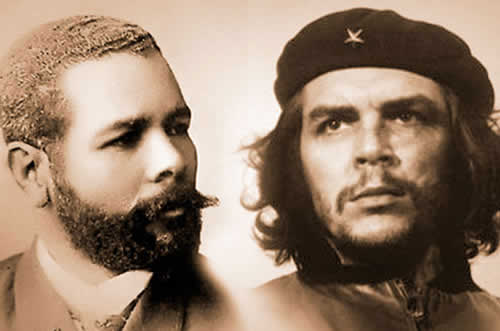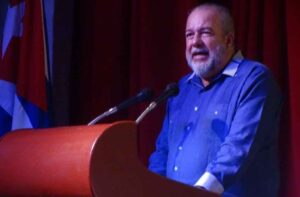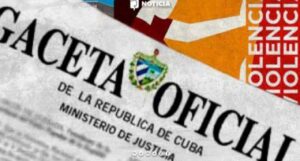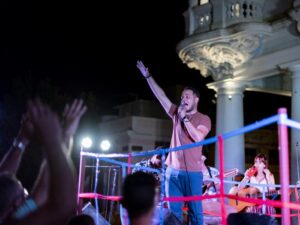The coincidences of life, accepted not without discussion by the Marxist approach, united in the same patriotic history – that of Cuba – two titans of righteousness and courage, immortal fighters for freedom: Lieutenant General Antonio Maceo (1845-1896) and the Heroic Guerrilla Ernesto Che Guevara (1928-1967) on the date of 14 June, marked as the birthdays of both, although in different times, places and centuries.
So every year Cubans gladly travel to the world of metaphors and coincidences thanks to the winks of the future, either independently or by linking them in joint celebrations for the ephemeris, aware that such heroes not only belong to the memory of this nation, but also that they were two greats of Latin America and humanity, whose lives are an example, inspiration and guide without distinction of epochs.
The Mambi General Antonio Maceo Grajales, born in San Luis, Santiago de Cuba, in the east of the country when the island suffered under the Spanish colonial yoke, and Ernesto Guevara de la Serna, a native of Rosario, Argentina, who fought for the freedom of this land with great courage and commitment, loving it like another son, although they were not contemporaries, are integrated without dichotomy into the world of Cubans today for their tireless actions and their unbeatable and fundamental thoughts.
In Cuba, Maceo is also remembered under the halo of the greatness of his lineage, as the eldest son of the family founded by Mariana Grajales, today revered as Mother of the Homeland for her own career, and Marcos Maceo, also a combatant in the Liberation Army, who died during the fighting.
He entered Cuba’s history, young and full of extraordinary energy, in which he is one of the highest symbols of revolutionary morale, loyalty and combativeness -Mangos de Baraguá, 15 March 1878- and bears the insignia of his hard-to-equal track record in campaigns (Ten Years’ War and Necessary War).
He soon joined the ranks of the nascent Liberation Army, just a few hours after the uprising of 10 October 1868, fulfilling a mandate from his heart and his mother.
Encouraged by his mother, he joined the rest of his brothers as a soldier, and not only did he shine in the emancipation struggle, but also José, who reached the rank of General and died in combat at the end of the 19th century.
Antonio quickly and efficiently gained a performance difficult to match in the camps and stood out for his great offensive strength, which earned him the title of sergeant on the very night of his first combat at Ti Arriba. On 20 October he was already a lieutenant and captain standard-bearer on 10 December of the same initial year.
He earned the insignia of lieutenant colonel just 10 days after being a combatant, a post he held until 1872, when he was promoted to colonel and reached the outstanding position of Brigadier General in the middle of the following year. He received the star of Major General in May 1877, the rank with which the initiation war ended.
He was forced to go into exile and travelled around several West Indian nations, always linking his activities to the Cuban libertarian cause, until he settled in Costa Rica, in the agrarian colony of La Mansión. It was a sort of 17-year truce, until he rejoined Martí and Máximo Gómez in the project of the new war, which broke out on 24 February 1895.
To this end, he returned to Cuba on an expedition, together with another well-known Mambí leader, General Flor Crombet and his brother, General José Maceo.
In the heat of combat, he died at the age of 51 in San Pedro, Punta Brava, while consolidating the success of the Invasion from East to West, on 7 December 1896. Antonio Maceo, as Lieutenant General, was second in command of the camps in the War of 95, led by General Máximo Gómez and organised from exile by José Martí.
By then, his body bore the sacred marks of some 27 wounds, some of them very serious and which brought him to the brink of death before that fateful moment; chroniclers and experts say that he took part in more than 600 combat actions.
His genius as a leader and military strategist, like that of Máximo Gómez, was recognised not only in Cuba, but also in the region, when the Mambises astonished the world with their resounding victories and performance in the last liberation campaign.
As for the Cuban people’s beloved Che, he became part of our history and heart when he decided to join the expeditionaries of the Granma yacht in Mexico who set sail in 1956 for the Sierra Maestra, to fight for the island’s freedom.
From there he came down with the rank of Commander, bravely earned in July 1957 and demonstrated as the leader of an important column, when he led decisive battles and in the legendary final battle of Santa Clara.
He joined the fight as a medic but soon proved that he was ready for the battle.




